Palestine. Part IMapJuly 15, 2012 There once lived two boys named Izzy and Pete. They grew up side by side, then moved into a shared room. When Izzy’s family came to live with him, the landlord gave him ownership of the room. Pete was left with a partitioned-off area in the furthest corner of the room. Ever since then, Izzy and Pete coexist as feuding neighbors, spitting in each other’s soup and putting tacks on each other’s chairs. Not only that, but Izzy can’t kick Pete out, and all of Pete’s guests have to trudge through Izzy’s part of the room. That, in a nutshell, is the history of Israel—Palestine relations. The Palestinian Authority is located within Israel. And the only way to get into it is through an Israeli checkpoint. Every Palestinian dreams of finding a job in Israel. But only a lucky few make it there. If you see houses standing close together in straight rows, surrounded by a fence, it’s a typical Israeli settlement. From the Palestinian side, it looks like this: 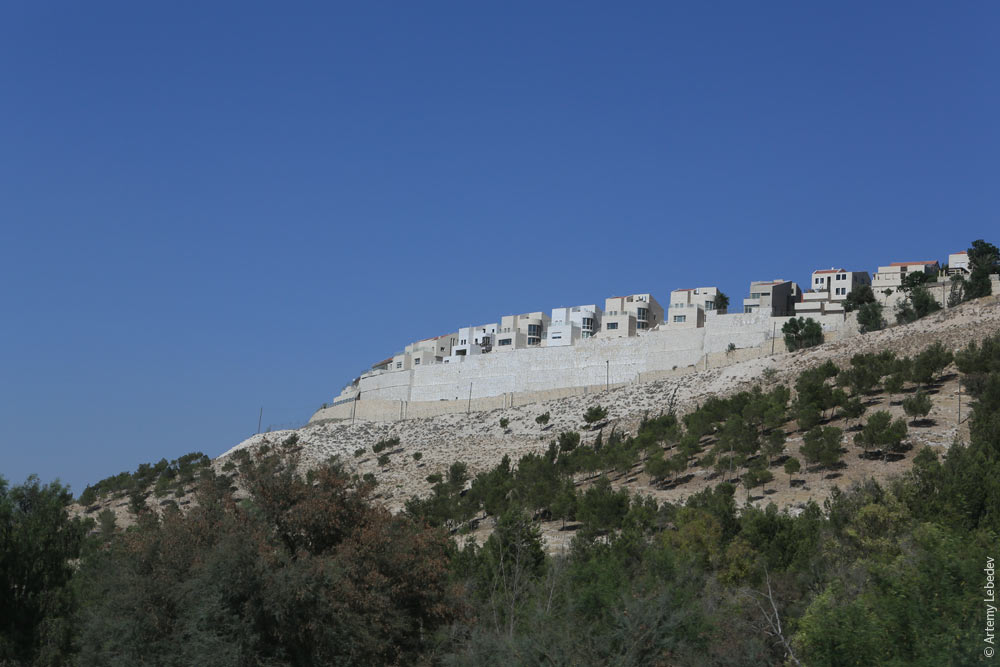 A typical Palestinian settlement looks like a conglomeration of chaotically scattered buildings. 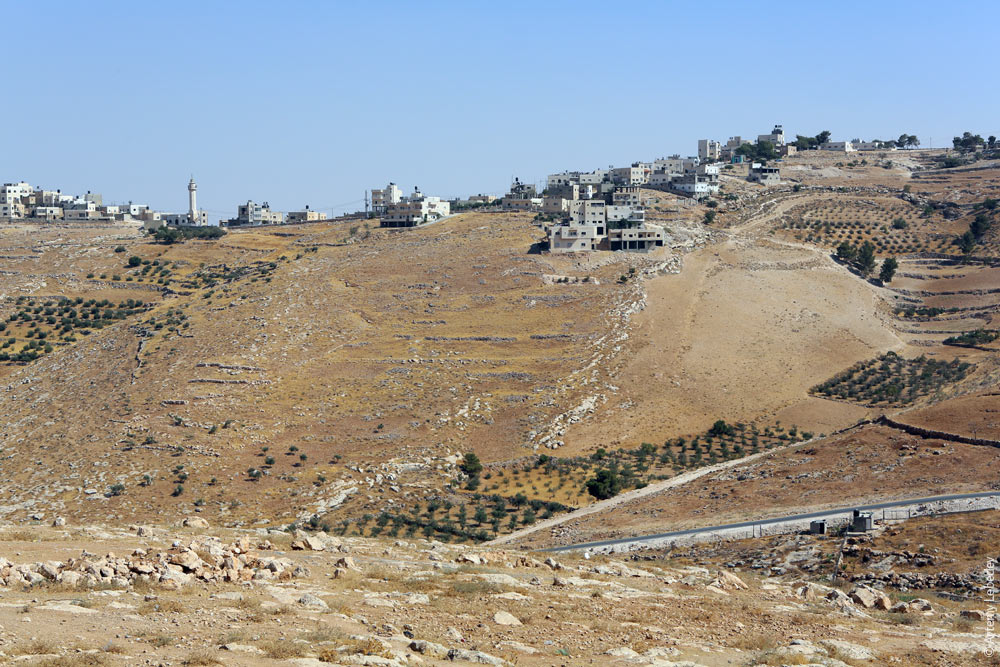 The road signs here are the same as in Israel. A populated locality.  Caution, children!  Gas station. 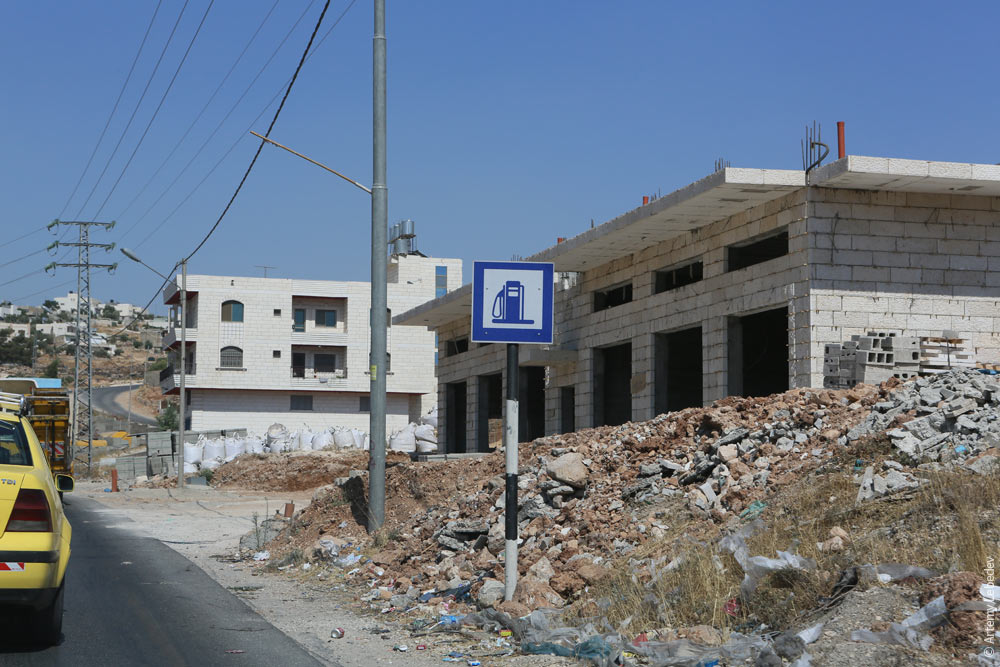 Stop. 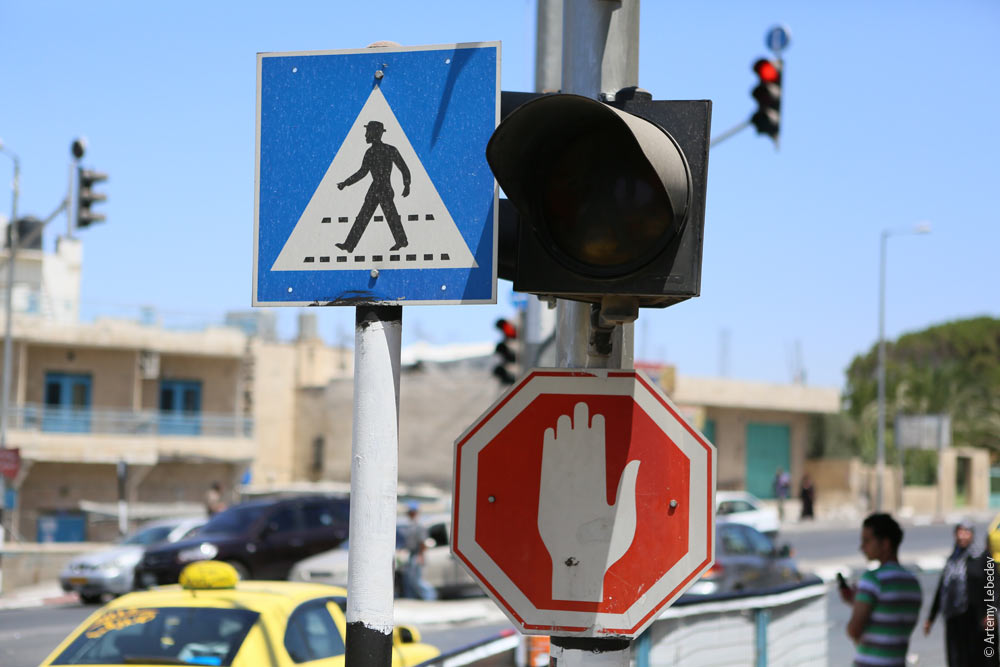 The traffic lights are also Israeli. 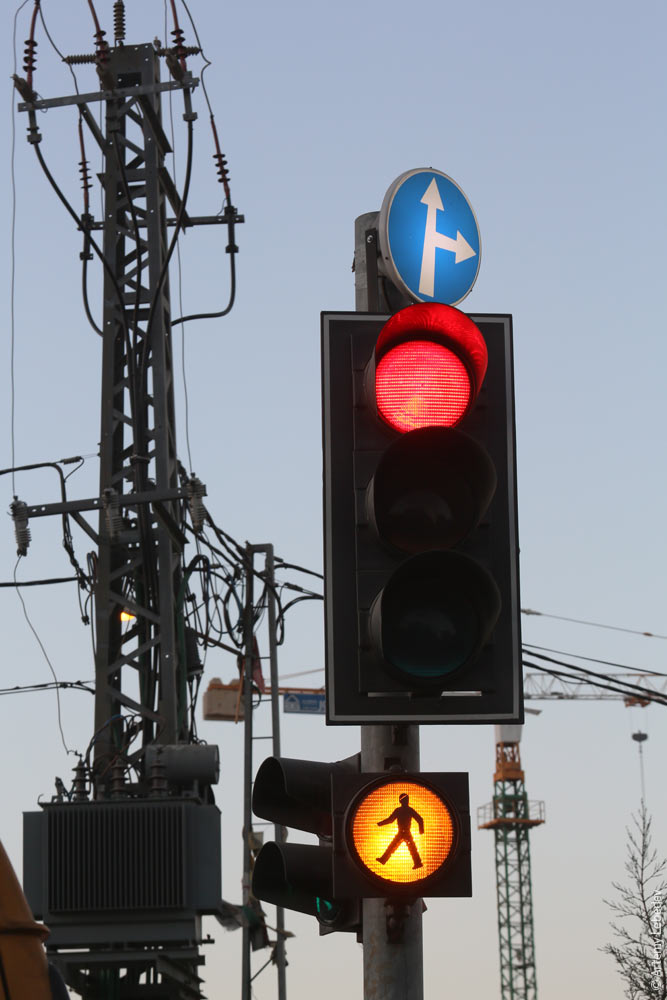 Vehicle inspection stickers are local. 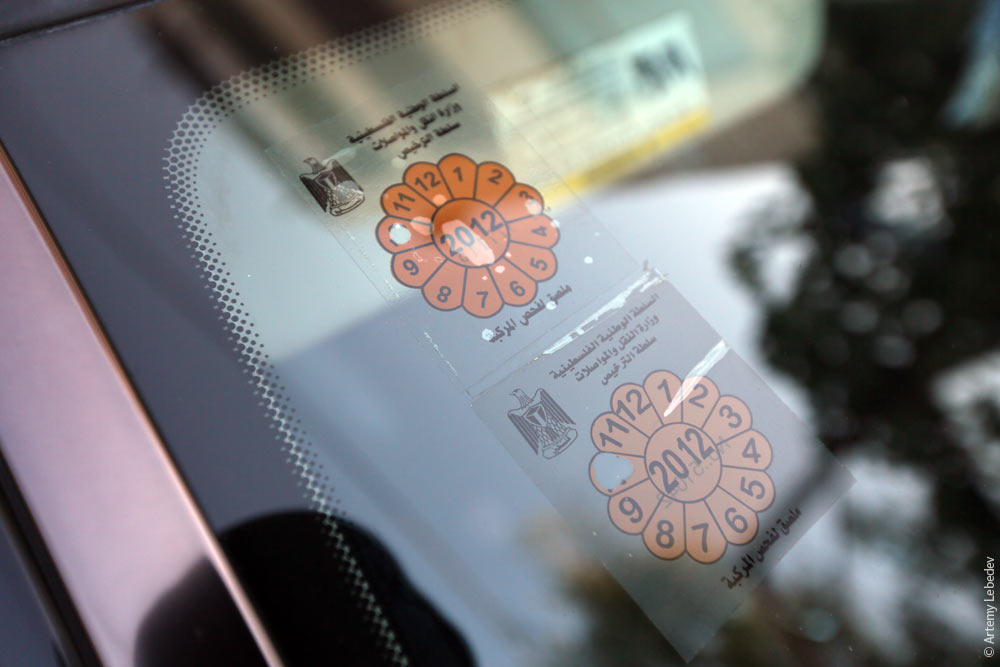 You can’t drive into Israeli territory with Palestinian license plates. Naturally, Israelis assume that any car driving in Palestine with Israeli plates will be shot at, or at the very least assailed with rocks. In reality, lots of Palestinians have Israeli plates—it’s easier to do business that way. A Palestinian license plate:  Ad billboards.  Inside some guy’s house in a rural area. On the table is a photo of him in his youth with Yasser Arafat. 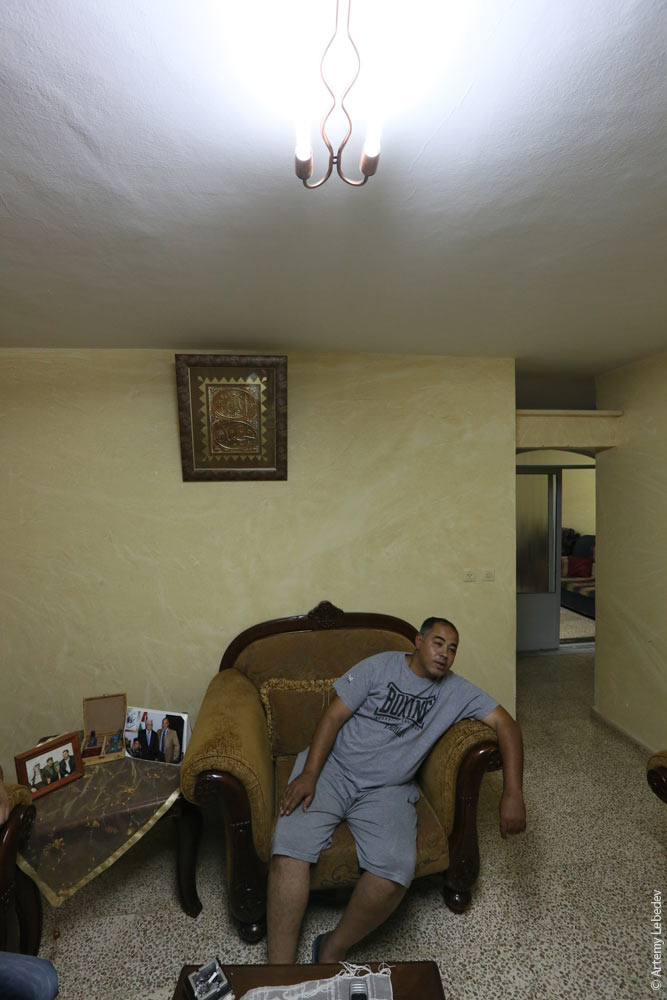 I assumed that Arafat’s portrait would be on every wall, but he only waved his hand hello a couple of times. 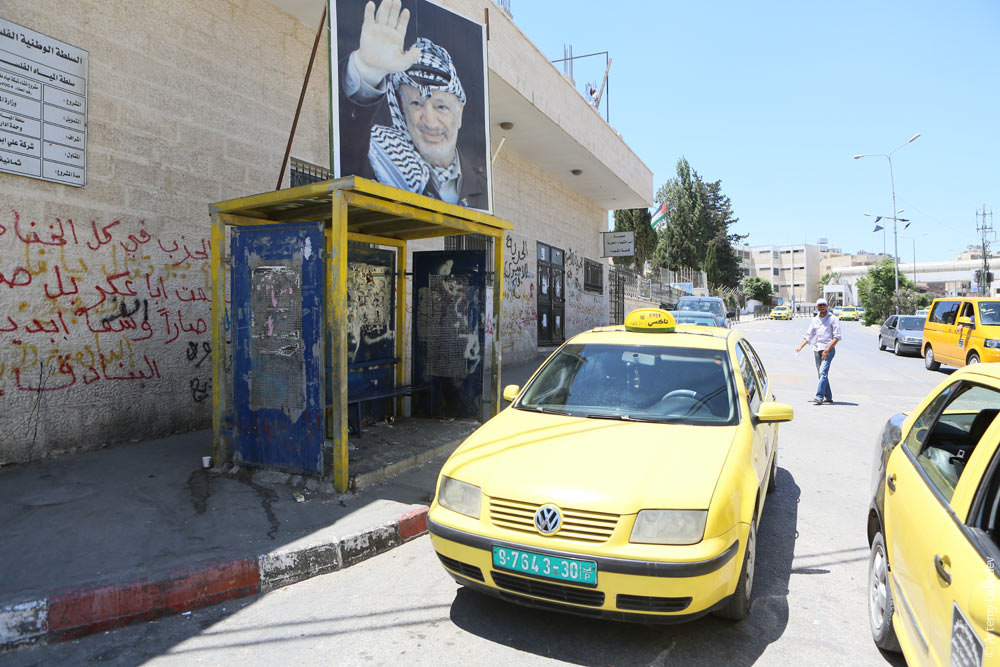 Palestine has two types of taxis: those which operate only inside city limits and those with a wider range. The ones which can’t leave the city have all their fenders painted black. 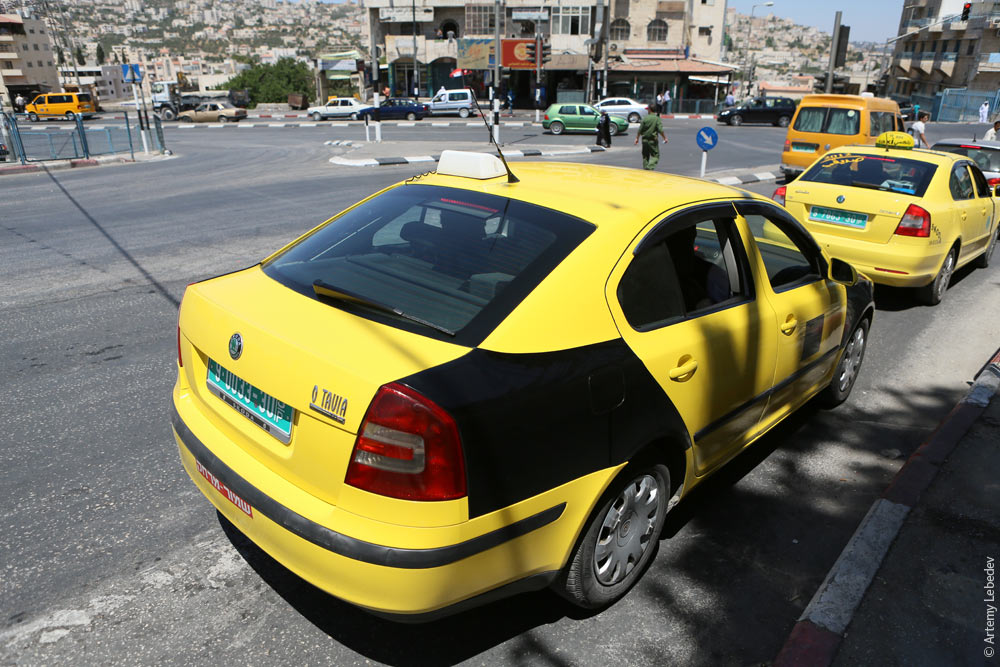 The situation with electricity is really bad in Palestine: power is only available one hour a day. The water situation is also bad. There are places which only have running water once every two weeks. According to some agreement or other, Israel is obliged to supply Palestine with a certain amount of water, but the Arabs don’t have the time, capability or desire to utilize this resource rationally, so there’s a permanent water shortage. While every Israeli house has white boiler tanks on the roof, the most prominent feature on Palestinian roofs is black water storage tanks. Water is pumped into these tanks from underground rainwater reservoirs (in the rare instances when it actually rains) and from the water supply when the Israelis turn on the tap. Particularly wealthy Palestinians might also splurge on a boiler, but a storage tank is a necessity no one can live without. 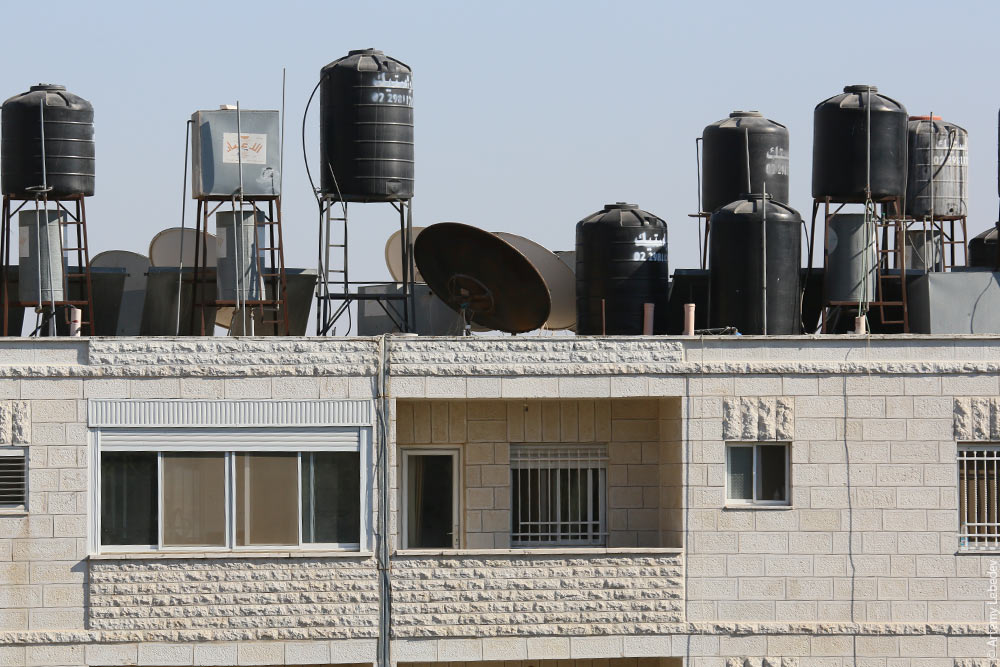 BethlehemMapEarly in the morning, a car with Israeli plates arrives to pick me up from my hotel in Jerusalem. Half an hour later, I’m at the border with Palestine, which the Jews have surrounded with a wall so high it makes the Berlin wall seem like a shoddy village fence in comparison. The wall has observation towers every few hundred meters, manned by Israeli soldiers. Paint splatters are visible on the towers—this is a popular form of entertainment for protesting youth. But almost no one can throw as high as the glass windows. The wall is covered with retribution-inspired art. The Israeli soldier turns my passport this way and that, then hands it back. Entry granted. The inspection is perfunctory at best. On the Palestinian side, no one is checking documents at all. The Palestinian city of Bethlehem is located here. Tourists visit somewhat apprehensively on buses, but are afraid to travel any further. Israel is on the other side of the wall. 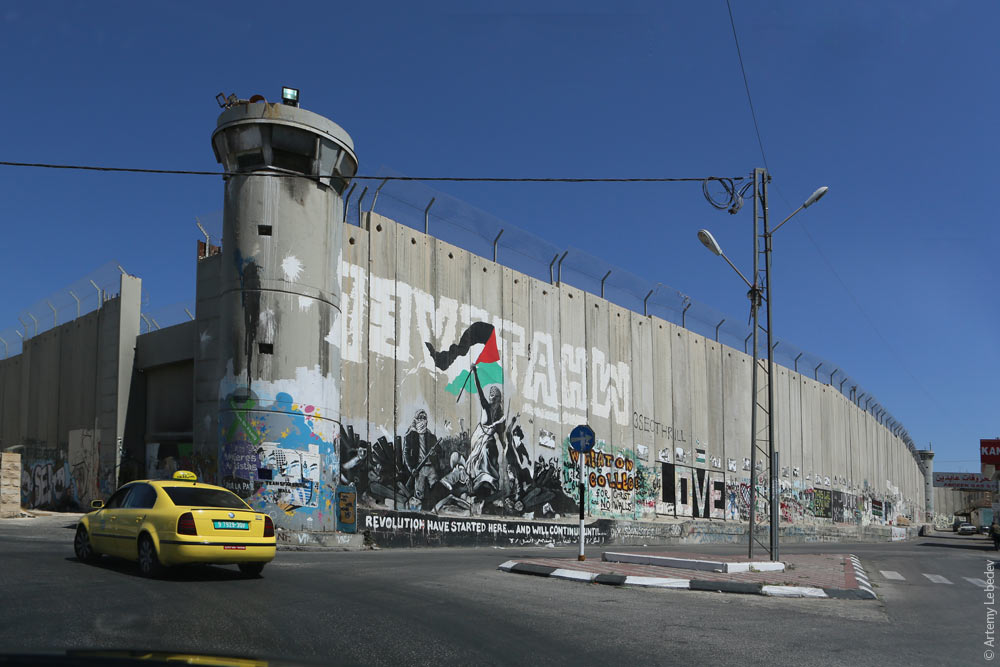 My further travel is carried out in a local car, supplied by the owner of a Bethlehem shop which sells tacky Christian souvenirs. He turns out to be a terrible swindler: in the middle of the day, he starts calling and demanding I return the car or pay extra, even though we’d agreed for the full day. Arabs are second to none when it comes to changing the terms of a verbal agreement (natives of the Caucasus, who suffer from the same tendency, are utter babies in comparison). The only way to fight this is to apply pressure through someone higher up. 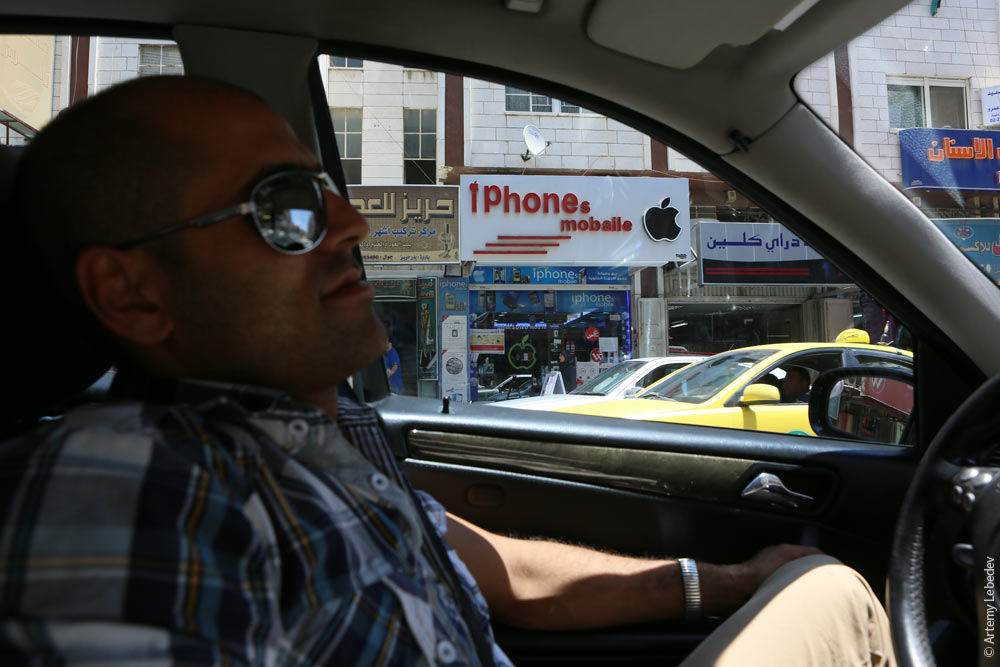 The first thing that strikes the eye is all the Russian flags in the street. 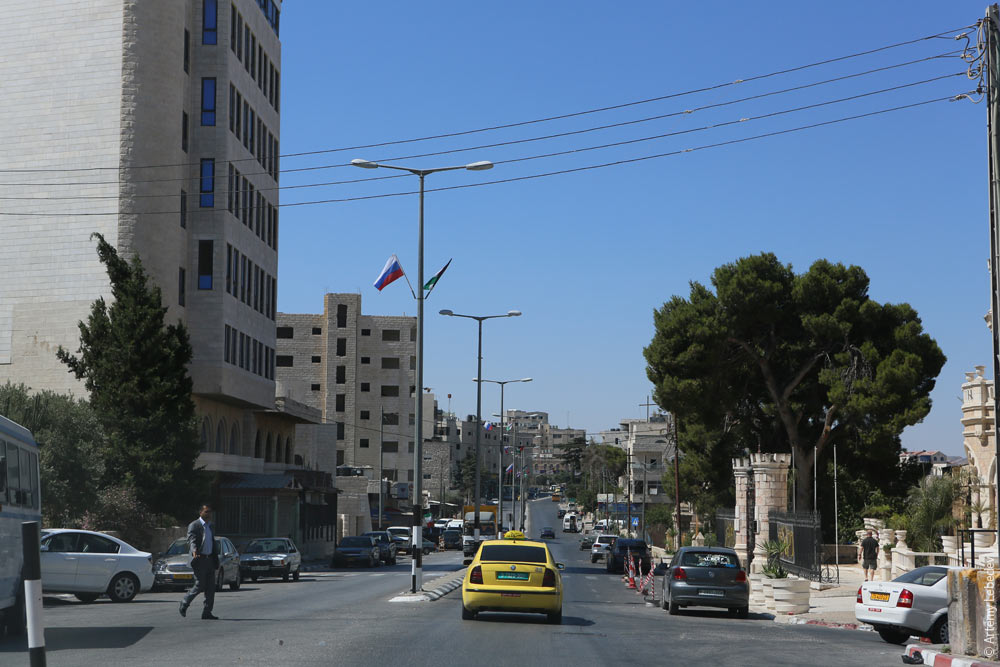 What is this about? What for? It’s all because Putin was here with a visit. One of the side streets was even renamed in his honor (hello Grozny). 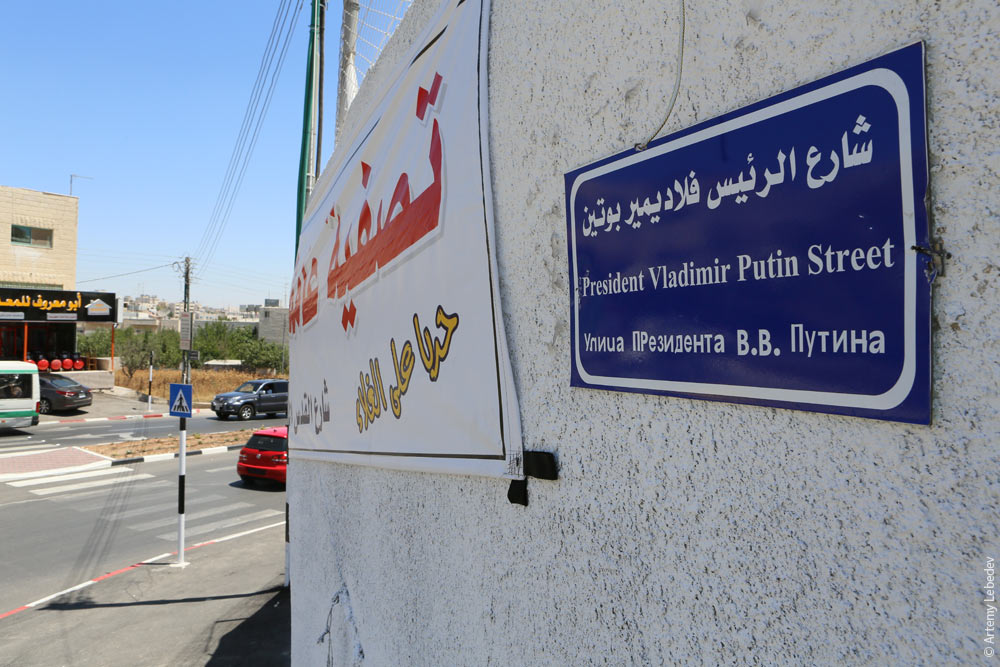 A manhole.  A post office.  Breadbox-like protective water meter covers can be seen on every building. 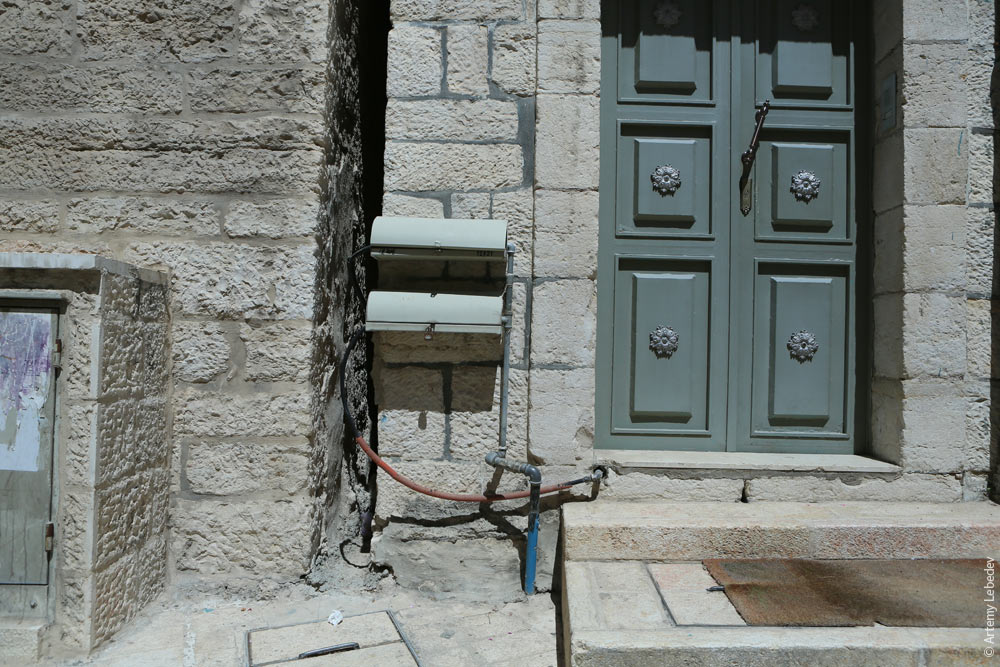 Bethlehem dumpsters are parked in their bays at the expense of sidewalk space. 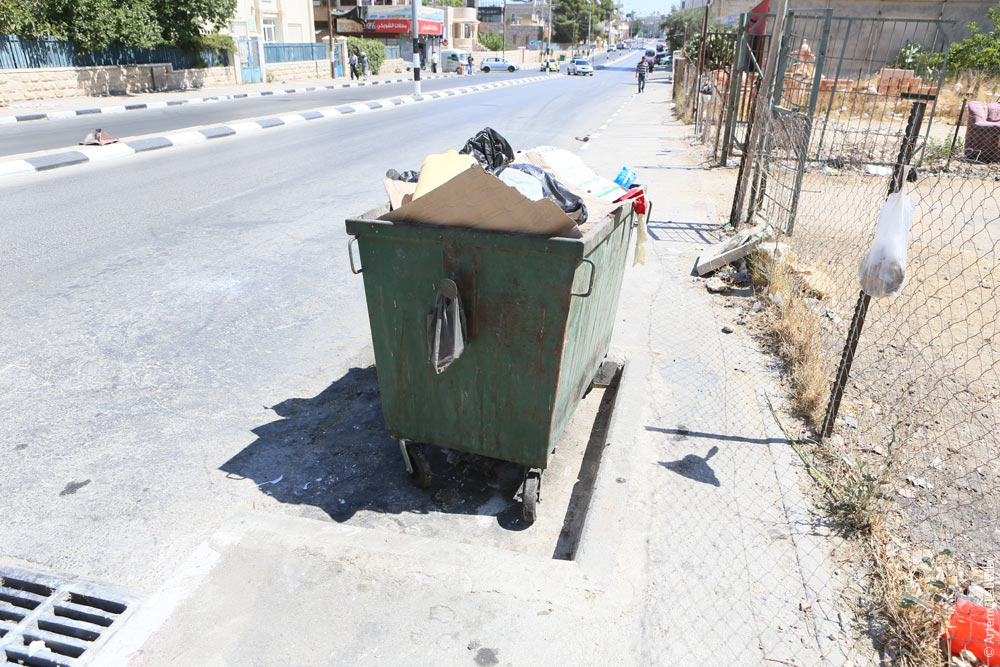 Payphone hoods don’t always have a phone under them. 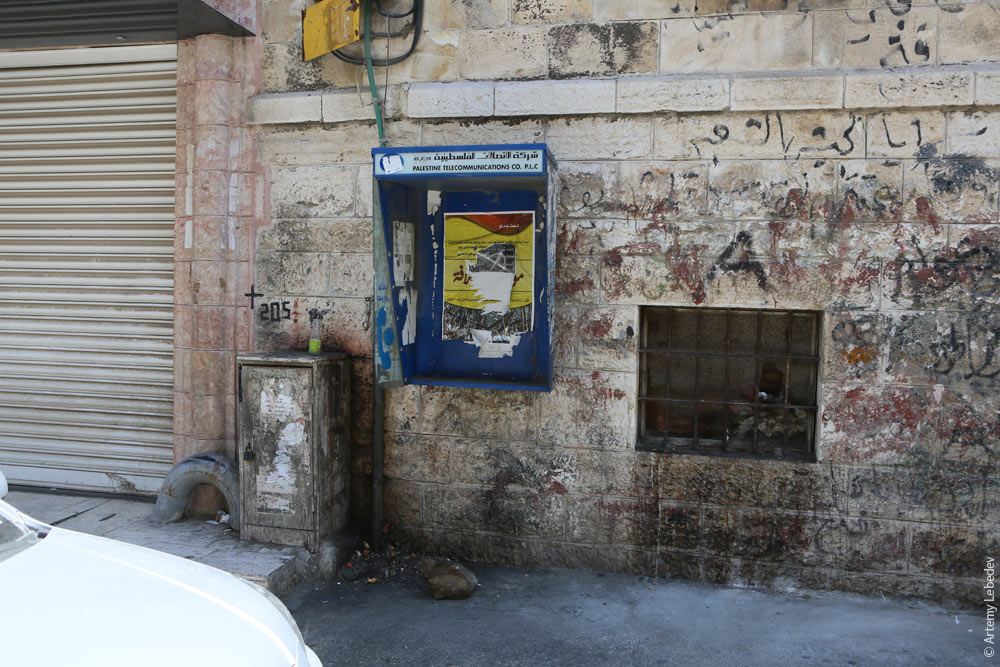 The walls are covered with suspiciously high-quality drawings. 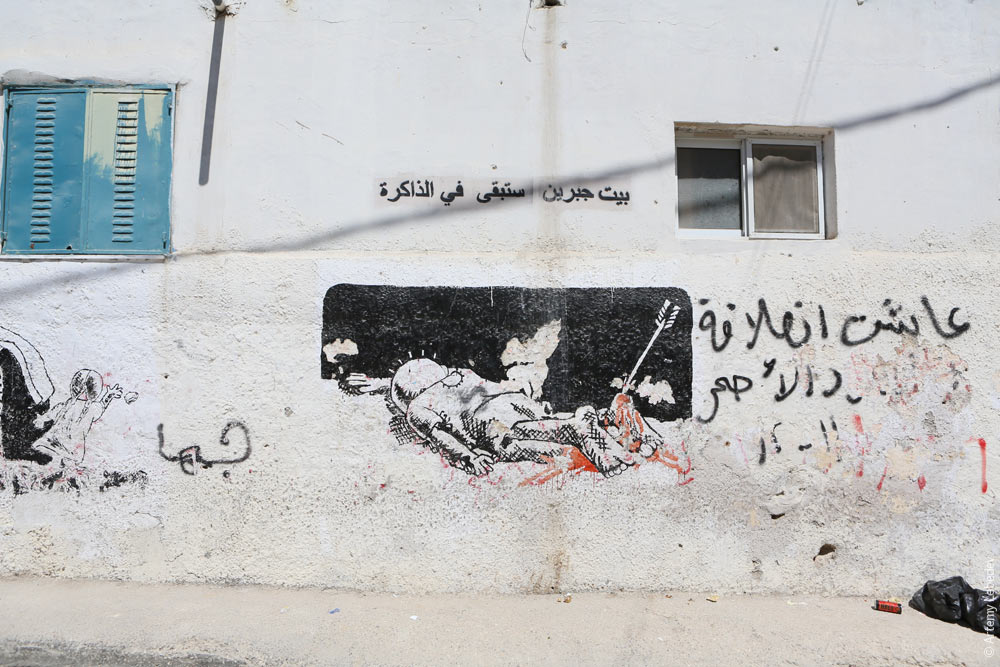 Let’s take a walk through the city. 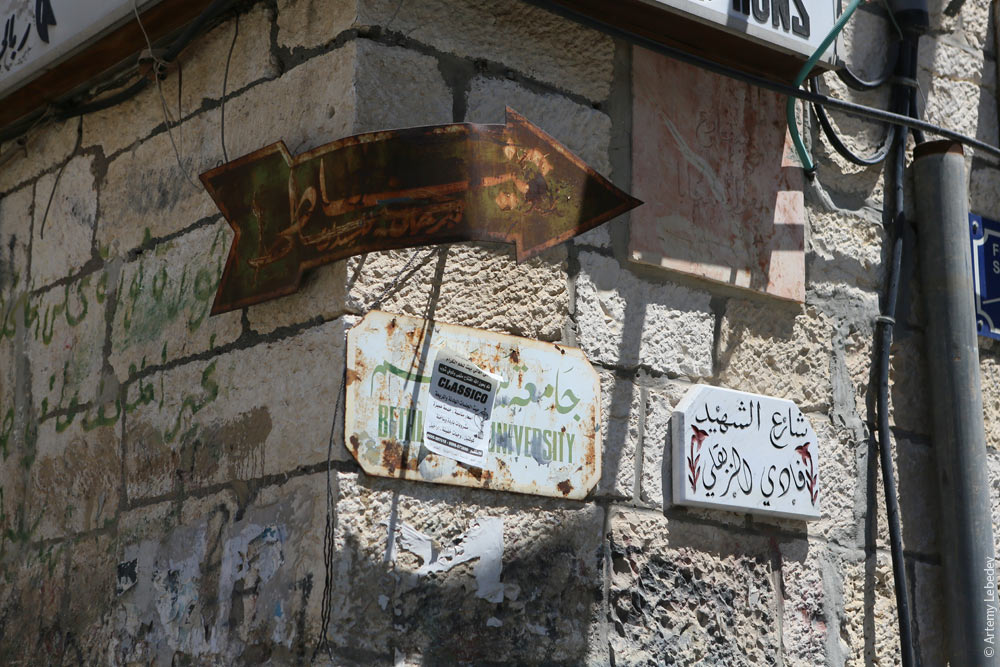 The townsfolk are hiding out in the shade. 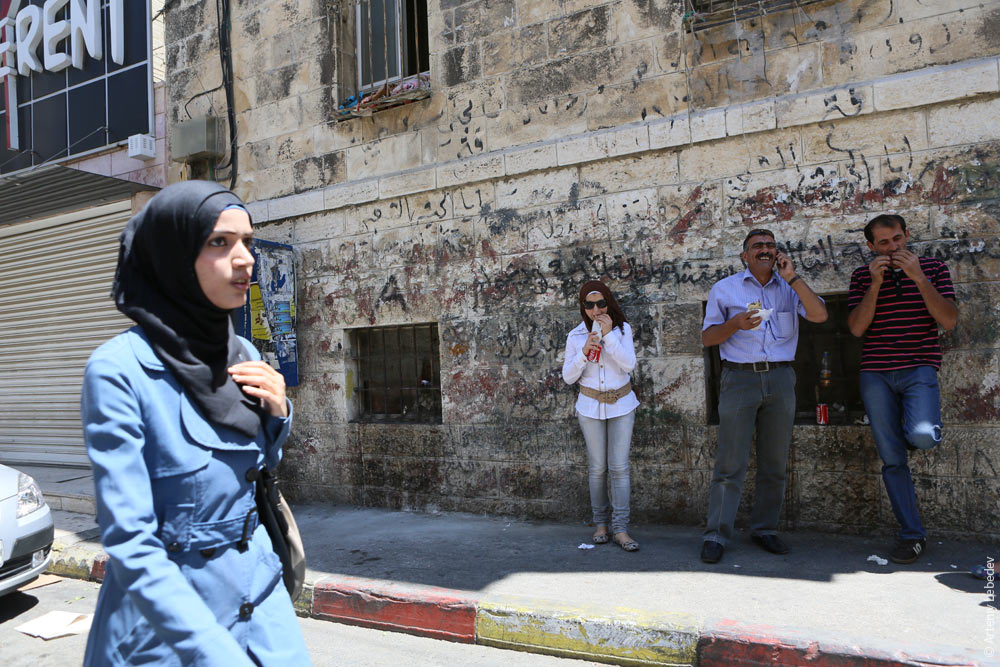 The bazaar. 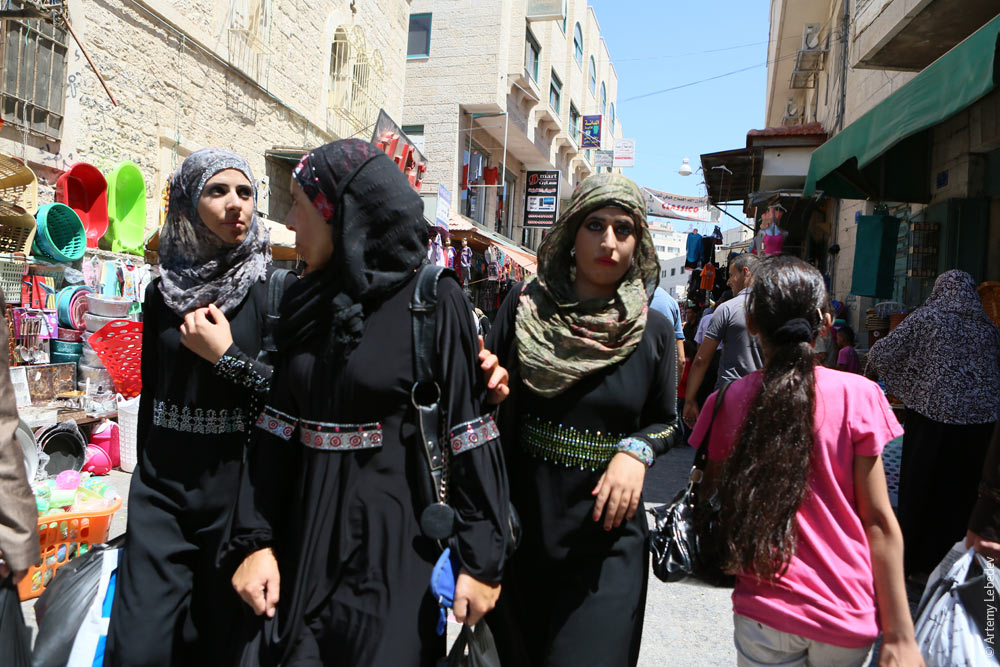 A butcher shop. 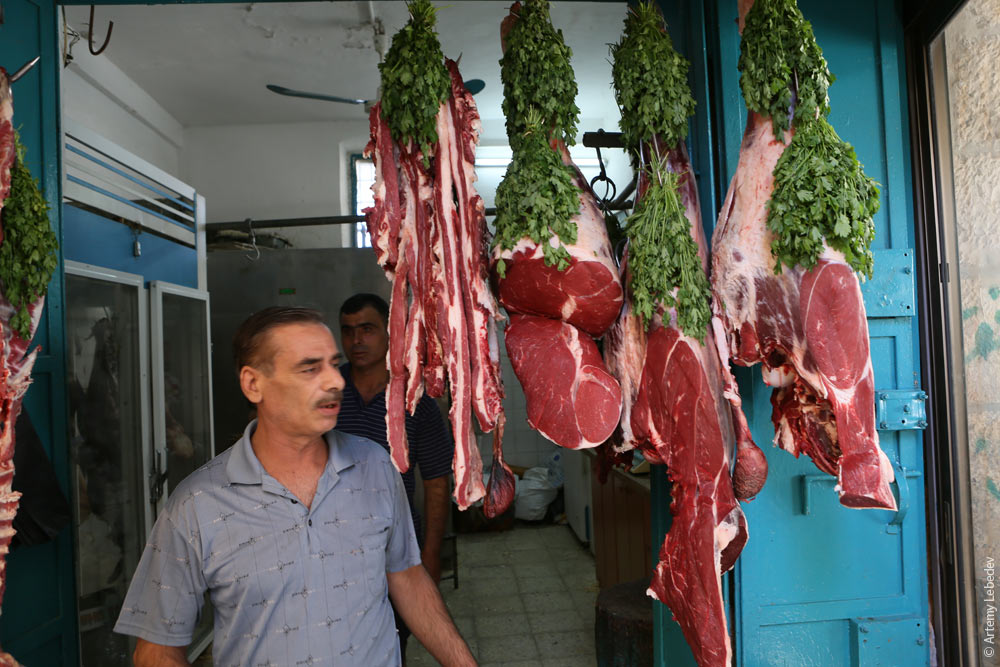 A loofah salesman next to a payphone. 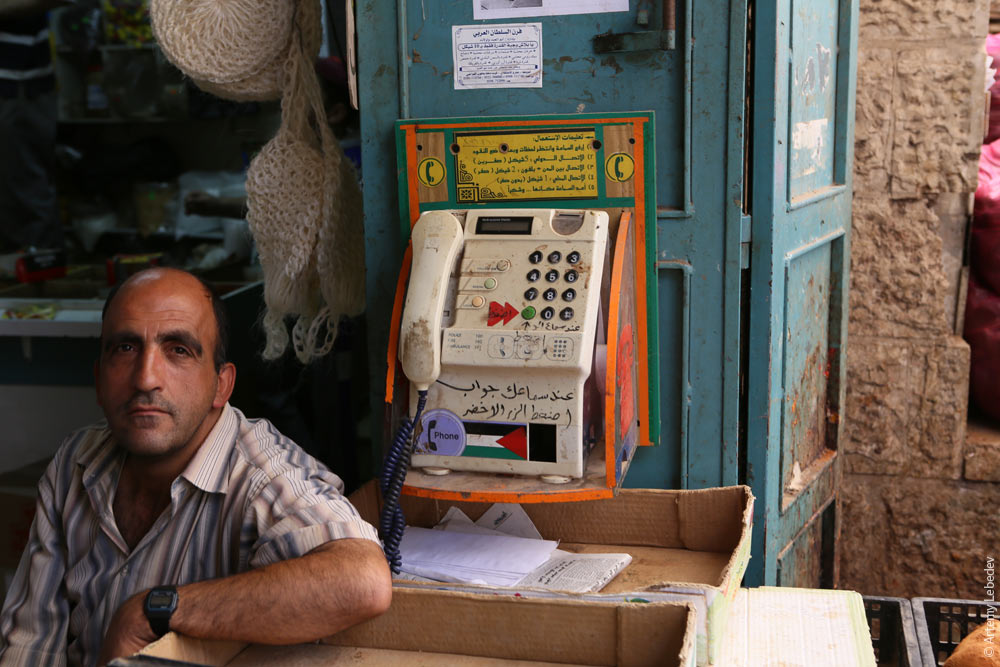 Girls walking past a carpet shop.  A truck stops in the middle of a narrow street to unload firewood. A disgruntled traffic jam forms behind it, cars honk, some man gets out of his car to yell about having some decency. 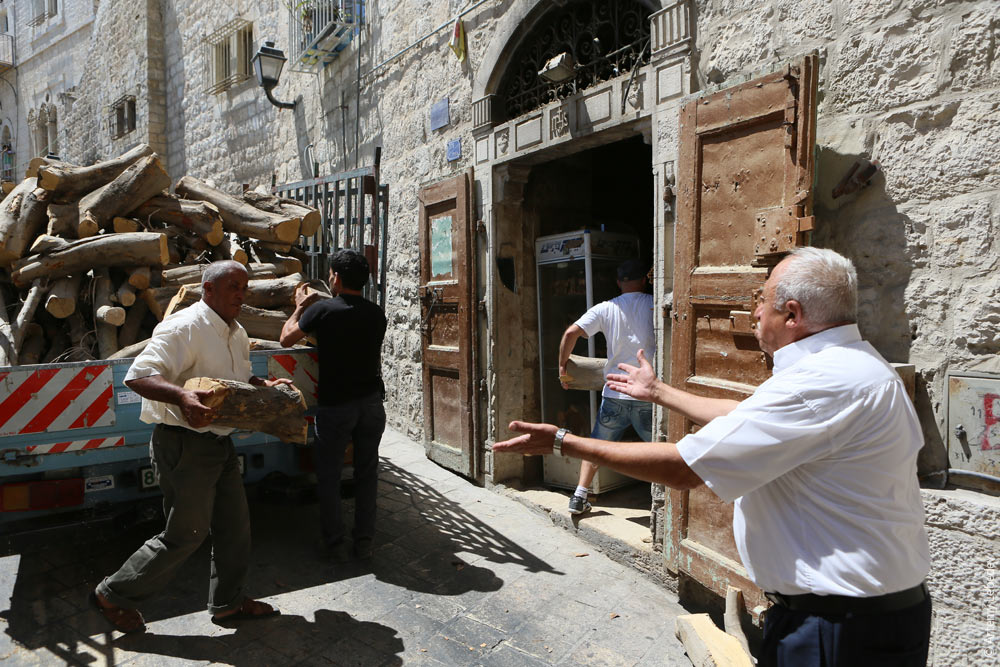 Stores consider it good form to put the logo of each advertised brand on a separate lightbox. 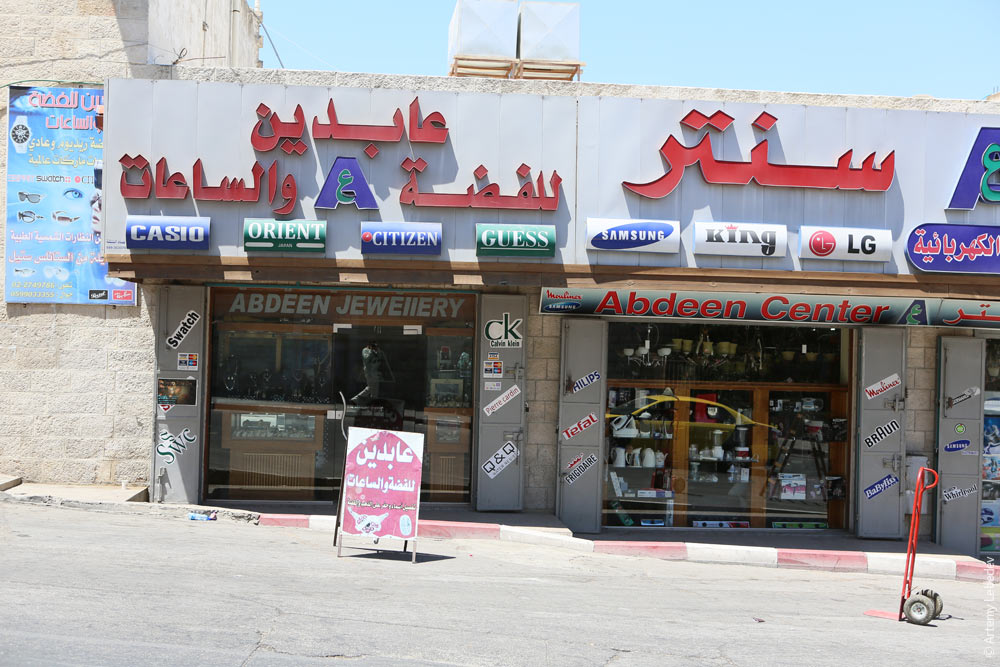 |